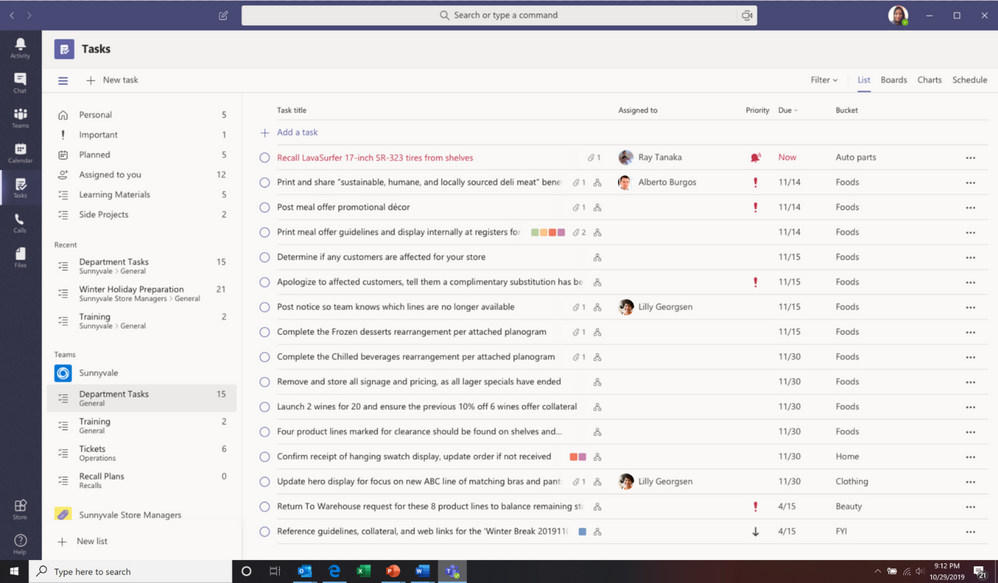Over the past few months, Microsoft Teams has made a mark for itself as the go-to collaboration tool for businesses and healthcare organizations worldwide. Just last week, Microsoft Chief Executive Officer Satya Nadella disclosed that over 75 million active users were logged in a single day, a new record. Also, daily meeting participants reached 200 million – another milestone.
While most of the growth has been driven by the COVID-19 (coronavirus) pandemic, the trend toward digital productivity tools is expected to continue. To support current customers and future growth, Microsoft has an aggressive feature roadmap planned for Teams.
Over the next few months, new artificial intelligence noise suppression features and an expanded gallery view for video chat, are on the way. One of the most significant productivity-driven updates is the new Tasks for Teams experience, which we’re covering today.

If you’re anything like us, you know that managing tasks can be a job in itself. Searching for tasks across applications is time-consuming and can drain productivity. What if there was a central location to handle all types of tasks from across the Office 365 portfolio? That is the vision of Tasks for Teams.
The new built-in Teams application will appear as a tile in the left side-rail (pictured above). From here, you will be able to see personal tasks from To Do (which are viewable only by you) as well as channel-level and team tasks from Microsoft Planner.
If you’re using one of these applications already, you can continue to use it the way you do now. What Tasks for Teams aims to do is to put them all in one place. Synchronization ensures that tasks created in To Do and Planner sync with what you see in Teams – and vice versa.
These tasks can be viewed in familiar Board, Chart, and Schedule formats, in addition to a new List view (pictured above). A list view is a popular request seen on Microsoft community board comments. We expect this view to also come to the Planner web application at some point.
Task endpoints
We mentioned earlier the vision of managing all types of tasks from Tasks for Teams. Task endpoints enable Tasks for Teams to intake new items from numerous Microsoft services, including:
- · Outlook
- · Launcher
- · Cortana
- · Word
- · Excel
- · PowerPoint
Additional upgrades are coming to Outlook to support this new functionality better. In Word, Excel, and PowerPoint, a new task can be created with a @mention inside one of these apps. Instead of hunting for tasks across Microsoft products, Tasks will bring them all into one place.
Instead of hunting for tasks across Microsoft products, Tasks will bring them all into one place. This will be done through task endpoints.
Task assignment
Also included in the Microsoft roadmap are administrative tools. This functionality enables task reporting, publishing, and dynamic assignment (targeting). As a use case, Microsoft provides an example of a retail store.
Targeted assignments enable corporate and regional leadership to send task lists specific to a particular region or even location. From there, progress on completing these items can be tracked through real-time reporting. Managers of local stores can create tasks list specific to his team, outside of the corporate scope. The possibilities are endless, and these are just a few ideas on how the Tasks for Teams experience can benefit your organization.
Summary
We’re excited to use Tasks for Teams as part of our internal business processes. This new experience is set to launch starting in the middle of May for some customers, with roll-out expanding to the entire Teams user base by the end of July. For more information on how Dynamic Consultants Group can help you and your organization, contact us today.



